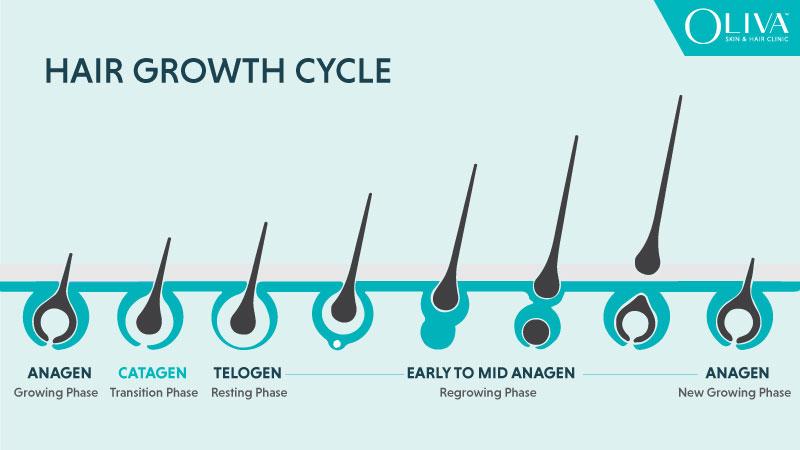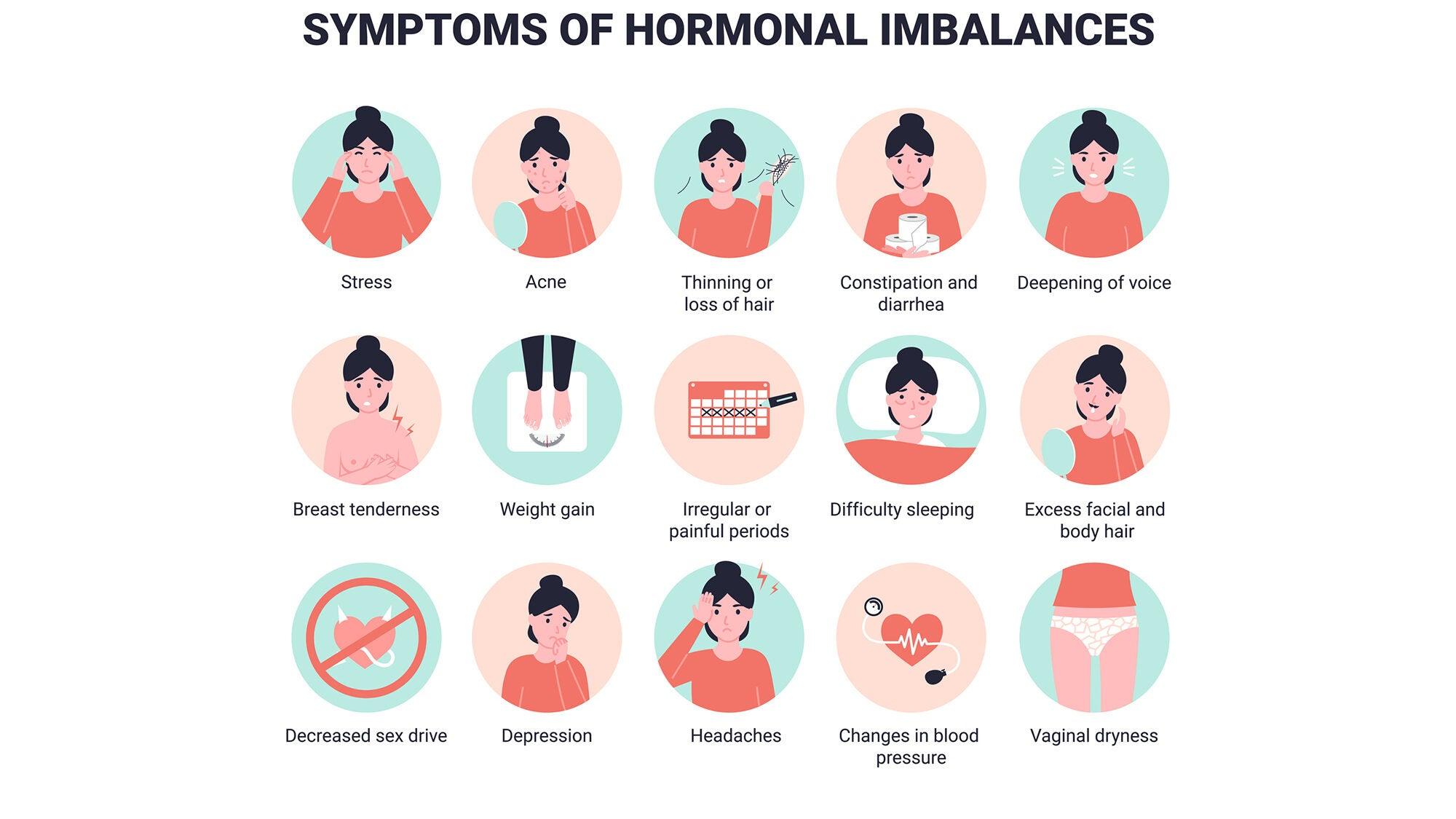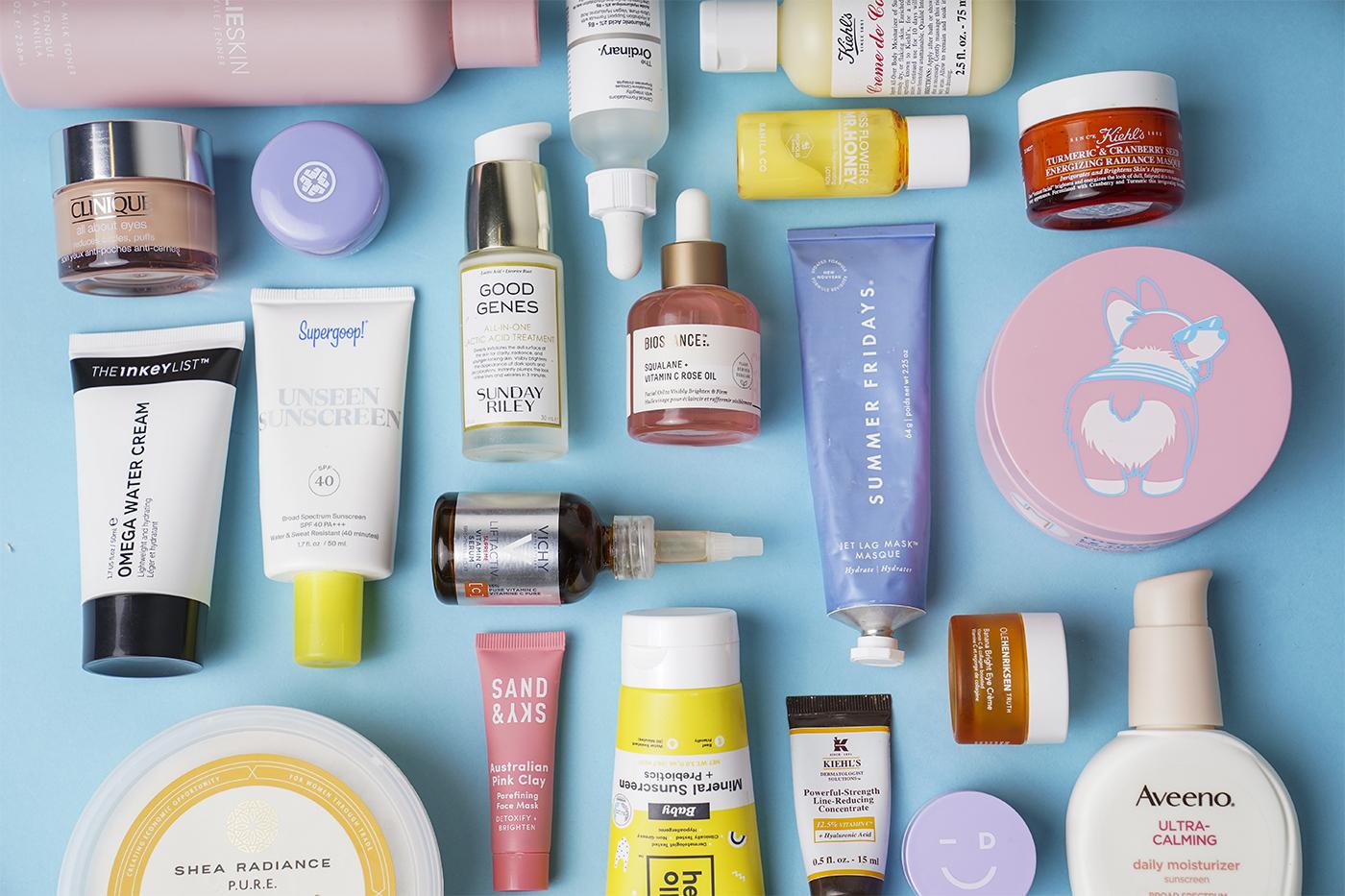Picture this: You’re beach-ready, flaunting that sun-kissed glow and smooth skin courtesy of your trusty laser hair removal treatments. Then, out of nowhere, those pesky hairs start making an unwelcome comeback. You scratch your head, staring at your reflection, and wondering, “What went wrong?” If you’ve ever found yourself in this perplexing scenario, you’re not alone. Many embark on the journey to stubble-free living, only to find their progress mysteriously hitting pause. Whether you’re a laser newbie or a seasoned zapping veteran, let’s unravel this hairy tale together, and discover why your laser hair removal might’ve taken a momentary break. Buckle up, because we’re diving into the nitty-gritty of laser lamps, follicles, and maybe even a few unexpected spoilers along the way.
Table of Contents
- Understanding the Hair Growth Cycle: When Its Not You, Its the Follicles
- Hormonal Havoc: How Fluctuations Can Stall Your Smooth Sailing
- Technology Matters: Is Your Laser Up to the Task?
- Prepping for Success: Skin Care Tips to Maximize Results
- When to Call in the Experts: Knowing When Its Time for a Professional Opinion
- Q&A
- Future Outlook

Understanding the Hair Growth Cycle: When Its Not You, Its the Follicles
Hair growth is a fascinatingly complex cycle, and it’s essential to understand this cycle to make sense of temporary halts in your laser hair removal journey. Your hair doesn’t grow in a monolithic pattern; instead, it undergoes three critical phases: anagen (growth), catagen (transitional), and telogen (resting). The laser targets the pigment in the hair during the anagen phase, which is when it’s actively growing. If you happen to time your treatments while more hairs are in the resting phase, you might notice a perceived pause in progress.
- Anagen: This is the optimal phase for laser treatments as your hair is in active growth. It’s the longest phase, lasting anywhere from several months to years, depending on the body area.
- Catagen: Known as the transition phase, this stage is relatively short, spanning about 2-3 weeks. During catagen, hair stops growing but does not yet shed.
- Telogen: This phase is essentially the hair’s resting period, lasting about 3-4 months. At the end of this phase, hairs will shed to make room for new growth.
The follicular antics don’t end there. Various factors can influence these stages, ranging from hormones to stress to even seasonal changes. That’s where the apparent “pause” in laser hair removal progress sneaks in. No matter how religiously you adhere to your treatment schedule, not all follicles will be in the anagen phase at the same time. Therefore, a lull in your treatment’s effectiveness could merely be a waiting game.
| Phase | Duration | Effectivity for Laser Treatment |
|---|---|---|
| Anagen | Months to years | High |
| Catagen | 2-3 weeks | Low |
| Telogen | 3-4 months | None |
Another wrinkle in the smooth fabric of your laser hair removal schedule is the synchronization hiccup among follicle cycles. Follicles operate independently, meaning they’re not always in the same phase. This asynchrony can create periods where less hair is actively growing, thereby giving you the impression that your laser treatment isn’t working. Thus, that “pause” isn’t anything you’ve done wrong or a fault in technology; it’s simply follicular timing playing hard to get.

Hormonal Havoc: How Fluctuations Can Stall Your Smooth Sailing
Imagine this: you’re several sessions into your laser hair removal journey, and suddenly, progress seems to hit a standstill. What gives? One often-overlooked factor is **hormonal fluctuations**. Yes, those pesky hormones are not just about mood swings and acne; they also hold sway over your hair follicles and can dictate how well your laser hair removal sessions go.
During certain times—like puberty, pregnancy, menopause, or even because of hormonal imbalances like PCOS—your hormones may create an environment that is more conducive to hair growth. Essentially, those follicles that should be getting less attention from your bloodstream might suddenly find themselves “activated.” Here are some scenarios to consider:
- Menstruation: Hormone levels fluctuate, possibly leading to less effective laser treatments.
- Pregnancy: Increased estrogen levels may make hair thicker and more resistant.
- Birth Control: Hormonal contraceptives can sometimes mimic the effects of pregnancy on hair growth.
- Menopause: Decreased estrogen levels can result in changes to hair growth patterns.
If these hormonal shifts are suspect, your hair removal expert might suggest adjusting the **timing of your sessions** or exploring alternative settings on the laser device. Monitoring your menstrual cycle and scheduling your sessions accordingly can sometimes make a significant difference. It’s all about working with your body, not against it.
| Life Event | Hormonal Influence |
|---|---|
| Puberty | Increased overall body hair |
| Pregnancy | Thicker, more resistant hair |
| Menopause | Altered hair growth patterns |
| Birth Control | Varied effects, often increased hair growth |
Another essential factor to remember is stress. Elevated stress levels can cause a spike in cortisol production, another hormone that can lead to increased hair growth. Mindfulness, proper self-care, and perhaps professional guidance can help mitigate these effects. So, when hormonal havoc throws a wrench in your smooth sailing, there’s a map to navigate through it all.
Technology Matters: Is Your Laser Up to the Task?
One common culprit for stalled laser hair removal results could be the **outdated technology**. It’s worth noting that not all laser devices are created equal. While sitting on the cutting edge of innovation, modern lasers offer enhanced efficacy, precision, and comfort. In contrast, older models may lack the advanced features necessary to keep up with today’s needs, potentially leading your treatment to hit a proverbial ‘pause’. Keeping your technology fresh isn’t just about efficiency; it’s about achieving **consistent, optimal outcomes**.
Here’s a closer look at some key aspects that might be affecting your laser hair removal results:
- Wavelength Variety: Various lasers operate on different wavelengths which are more effective for specific skin types and hair colors. A one-size-fits-all approach might not be suitable.
- Cooling Mechanisms: Advanced cooling systems enhance comfort and safety, reducing the risk of burns and irritation. An outdated system might compromise client satisfaction and results.
- Pulse Duration: Newer lasers offer adjustable pulse durations to cater to different hair types and growth cycles, ensuring more efficient hair reduction.
The importance of **laser calibration** cannot be overstated. Over time, lasers can drift out of their optimal settings, resulting in less effective treatments. Regular calibrations ensure that the laser operates within specified parameters, maintaining the consistency of energy delivery, and thus the efficacy of the treatment. Aligning your equipment with manufacturer specifications ensures that clients receive the best possible care and outcomes.
| Issue | Outcome |
|---|---|
| Outdated Laser Technology | Reduced Efficiency |
| Poor Calibration | Inconsistent Results |
| Single Wavelength | Limited Compatibility |

Prepping for Success: Skin Care Tips to Maximize Results
First things first, cleansing your skin properly before your laser hair removal treatment is crucial. This not only ensures that the laser can effectively target the hair follicles but also minimizes any potential irritations. Use a gentle cleanser and steer clear of harsh exfoliants or active ingredients like retinoids for at least a week before your session. Your skin needs to be free of oils, lotions, and makeup, so it’s a great idea to cleanse thoroughly right before you head to your appointment.
Post-treatment care can make or break your results. Immediately after your session, your skin may feel sensitive or appear slightly red. Don’t panic! This is normal. Apply a soothing aloe vera gel or a cool, damp cloth to alleviate any discomfort. Avoid direct sun exposure and always use a high-SPF sunscreen to protect your skin. When in doubt, think gentle, natural, and cooling—your skin will thank you!
Hydration isn’t just about drinking water, although that’s a huge part of it. Keeping your skin well-hydrated can speed up the healing process and improve your results. Opt for a quality moisturizer that suits your skin type and feel free to apply it generously. **Ingredients like hyaluronic acid, glycerin,** and **ceramides** work wonders. Just remember to avoid any products containing alcohol or fragrances that can irritate your freshly-lasered skin.
Sometimes, your skin can be a bit more challenging, throwing a curveball into your routine. Hormonal changes or even irregular hair growth cycles can affect your progress. If you notice a sudden halt in improvements, don’t hesitate to consult your specialist. They might suggest adjusting the treatment settings or changing your session frequency. Remember, your path to smooth, hair-free skin is a journey, not a sprint!
Key Ingredients to Look For:
- Hyaluronic Acid
- Glycerin
- Ceramides
- Vitamin E
| Product | Benefit | Recommended Use |
|---|---|---|
| Aloe Vera Gel | Soothing and moisturizing | Immediately after treatment |
| High-SPF Sunscreen | Protects from UV rays | Daily |
| Hyaluronic Acid Serum | Deep hydration | Morning and night |

When to Call in the Experts: Knowing When Its Time for a Professional Opinion
Even with the best at-home laser hair removal devices, there can be instances where progress seems to have stalled. This can be due to various factors, such as device malfunctions or improper usage techniques. However, there are times when it’s essential to seek professional advice. Here are some scenarios to consider:
- Persistent Skin Irritation: If you experience prolonged redness, swelling, or burns, it could indicate that deeper issues are at play. A dermatologist can assess your skin’s reaction and advise on the best course of action.
- Inconsistent Results: While initial sessions may promise smoothness, sometimes hair can grow back unevenly or thicker in patches. Professional assessment can determine if hormone imbalances or skin conditions are affecting your results.
- Device Issues: If your device frequently powers down, shows error messages, or delivers inconsistent energy, it might be time for a technician to evaluate its functionality.
In such cases, don’t hesitate to reach out to professionals who can offer deeper insights and solutions. Here’s a simple comparison between tackling the issues yourself and bringing in a professional:
| Self-Diagnosis | Professional Help |
|---|---|
| Guessing the issue based on symptoms | Accurate diagnosis based on expertise |
| Trial and error with device settings | Customized treatment plan |
| Possible prolonged irritation | Immediate and effective remedies |
Moreover, understanding the difference between an at-home device and in-clinic treatments can clarify why professional help might be beneficial. Professional-grade lasers offer more powerful and precise results. This might be necessary especially if your hair type or skin tone doesn’t respond well to less intense devices.
So, when you feel your DIY approach isn’t yielding expected results, remember, professionals bring a wealth of knowledge and high-tech solutions. A quick consultation could save you time and unnecessary discomfort, getting you back on track to smoother skin.
Q&A
Q: Why isn’t my laser hair removal working as well as it used to?
A: Ah, the joys (or woes) of laser hair removal. Sometimes, your laser hair removal might seem to take an unscheduled vacation. This could be due to a variety of reasons, from hormonal changes to skipping those all-important treatment sessions. Think of your hair growth like a rebellious teenager—sometimes it just needs you to stay firm and consistent to keep it in line.
Q: Could stress or lifestyle changes impact my laser hair removal success?
A: Absolutely! Our bodies and hair follicles are surprisingly sensitive to the chaos that stress can bring. If you’ve been under a mountain of stress or have drastically changed your routine, it might show up in unexpected places, like your hair growth. Regular relaxation time and a balanced lifestyle can help keep those follicles in check and your hair reduction on track.
Q: What role does my hair type and color play in laser effectiveness?
A: Great question! Lasers love dark, coarse hair because it’s easier for the laser to target the melanin. If your hair is lighter or finer, the laser may have a harder time zapping it away. Sometimes what you need is a tailored approach, like consulting your technician about the best type of laser or adjusting the settings to better match your hair type.
Q: How important is sticking to my treatment schedule?
A: More important than you might think! Consistency is king when it comes to laser hair removal. Skipping sessions can give those pesky follicles a chance to regroup and start growing again. It’s like working out—miss too many gym days, and you’re back to square one. Stick to your scheduled treatments to keep things progressing smoothly.
Q: Can hormones affect my laser hair removal results?
A: Hormones—everyone’s favorite rollercoaster. Hormonal changes, like those during puberty, pregnancy, or menopause, can indeed affect your hair growth patterns. If your follicles decide to throw a hormonal tantrum, you might notice that your laser results aren’t as stellar as before. It’s worth discussing any hormonal changes with your technician to see if adjustments need to be made.
Q: What about my skincare routine? Can that impact my laser hair removal?
A: Yes, yes, and yes! Your skincare routine plays a pivotal role in the effectiveness of laser hair removal. Sun exposure, for instance, can make your skin more sensitive to laser treatment, potentially causing it to be less effective or even lead to pigmentation issues. Ensure you’re using sunscreen diligently and following any pre- and post-treatment care instructions from your technician.
Q: Is there such a thing as “too soon” for results?
A: Patience, young grasshopper! Laser hair removal is a process, not an instant miracle. You might not see dramatic results after just one or two sessions. Hair grows in cycles, and the laser can only target hairs that are in the active growth phase. Expect to notice significant changes after a handful of treatments, but trust in the process!
Q: Can my laser hair removal be tailored for better results?
A: Absolutely, personalizing your treatment can make a world of difference. Different skin types and hair colors respond best to different types of lasers and settings. Don’t hesitate to have a conversation with your technician about your concerns and experiences. They can tweak your treatment to better suit your individual needs, ensuring you’re getting the best possible results.
Laser hair removal is like a marathon, not a sprint – it requires perseverance, consistency, and sometimes a bit of fine-tuning. So hang in there, follow the guidelines, and you’ll be smooth sailing before you know it!
Future Outlook
And there you have it, dear smooth-seekers! While it might feel like your journey to velvety, hair-free skin has momentarily hit the pause button, remember that every great adventure has its twists and turns. Whether it’s your hormones having a party, your prenatal glow causing a brief hiccup, or your tan skin asking for a time-out, these little detours are merely part of your unique story. So, embrace the intermission, consult with your trusty laser technician, and know that the finish line is still very much within reach. Here’s to a future free of prickles and full of fabulous! ✨
Safe zapping and happy hair-free days ahead!
Until next time,
[Your Name]






